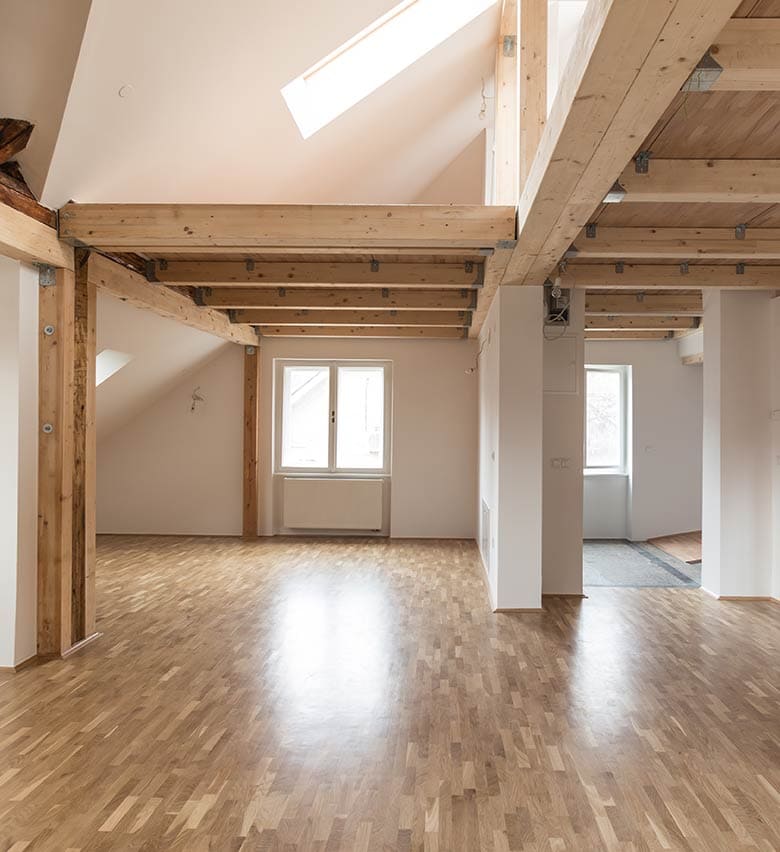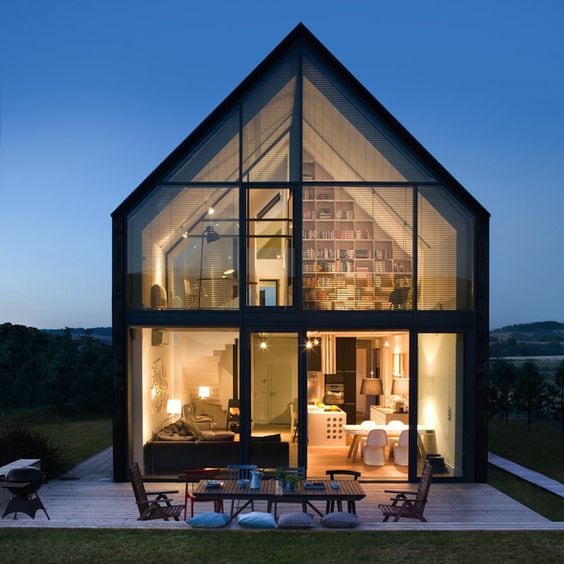
A few days ago, a client named Melanie called me and asked me directly if I was an interior designer, but a real designer she insisted. The questions are pouring in. What is your background? Are you a member of the Association des designers du Québec? I know very well why she asks me these kinds of questions and I answer her with pleasure and with all my usual sympathy. Like many other clients, Melanie’s story is that she hired a decorator to do a design project that was a little too complex for a decorator who is not comfortable with renovations or larger projects. In the end, Melanie is disappointed with her project, she has already spent a lot of money and she finds herself trapped to continue. She absolutely wants me to save her project. On the other hand, it is practically impossible for us to meet the deadlines if the project is already underway. Usually, our work sites are planned several months in advance. However, since I love helping people, I thought I would at least write this article to explain the difference between the different design professions in construction. I know that, when it’s not our job, it’s hard to find your way around.

I explain the difference between a decorator and an interior designer, between an architect and an interior designer, and between an architectural technologist and an architect. I’d also like to say a few words about engineers and their role in a renovation project.
DEFINITION OF A DECORATOR, OR WHAT IS THE ROLE OF A DECORATOR?
A decorator is a person who is passionate about beautiful things, colors and styles since childhood. She has an innate talent for mixing textures, materials and trends in bold ways to create exceptional decors.
Training to become a decorator is not mandatory, but is highly recommended. In fact, there is no order that governs the profession of decorators, so choose your decorator carefully and ask about her experience, the type of training she has taken and take a look at her achievements. There are many comprehensive training courses to become a decorator including in-depth studies of colors, materials, window treatments, styles and design history.
Lately, we see a lot of the term interior designer replacing the term decorator. This more modern term refers to the same definition as its predecessor.
Interior designers are excellent at making color choices if you want to repaint, choosing decorative elements to spice up your living room, selecting furniture and suggesting layout. They make beautiful bedroom layouts, including bedding and window treatments! They are real style enthusiasts!

Their limit is reached when it comes to renovations, i.e. major reconfiguration of rooms, moving load-bearing walls, changing plumbing and electrical elements, renovating kitchens and bathrooms, fitting out basements and designing custom furniture. These are all tasks for which the help of an interior designer will be more useful than that of a decorator.
WHAT IS AN INTERIOR DESIGNER, OR WHAT IS THE ROLE OF AN INTERIOR DESIGNER?
An interior designer is also a person who is passionate about all things beautiful, who loves colors and different styles, but, in addition, who loves the technical side! Because, yes, in design, we have to do a lot of calculations and technical drawings, like when we design furniture for example. So, in theory, she loved math as much as art in high school!
There are two main training courses to become an interior designer in CEGEPs and universities. First of all, there is the interior design technique in a few CEGEPs in Quebec, such as Trois-Rivières, Montreal and Saint-Jean-sur-Richelieu (that’s where I studied). I would say that all DECs stand out because of the very complete and technical aspect of their program. We see several drawing programs and study the national building code a lot. Then there is the Bachelor of Interior Design, offered at the University of Montreal. This program is as comprehensive as the technique, but it is more creative! We work more on the conceptual side of interior design.
There are other equivalent trainings, but if you want to be sure to hire a designer who is well trained, visit the website of the
Association des designers d’intérieur du Québec.
It lists all member and certified designers, sorted by region.
 The types of mandates carried out by interior designers are often those where it is a question of revisiting layouts or carrying out major renovations. So, as I said above, we do kitchen remodeling, bathroom remodeling, basement remodeling and custom furniture projects. We make technical plans for electricity, lighting and structure. We have many limitations as well and we must work in collaboration with architectural technologists and structural engineers when necessary. I explain below.
The types of mandates carried out by interior designers are often those where it is a question of revisiting layouts or carrying out major renovations. So, as I said above, we do kitchen remodeling, bathroom remodeling, basement remodeling and custom furniture projects. We make technical plans for electricity, lighting and structure. We have many limitations as well and we must work in collaboration with architectural technologists and structural engineers when necessary. I explain below.
WHAT IS THE DIFFERENCE BETWEEN A DECORATOR AND AN INTERIOR DESIGNER?
As the professions of decorator and interior designer are very similar, I will summarize more clearly the difference between the different types of mandates you should respectively entrust to them.
A decorator will be able to help you with all these subjects:
- Simple selection of furniture
- Bedding and window dressing proposal
- Choice of luminaire
- Proposal of decoration accessories
- Inspiration Moodboard by room
The interior designer will always touch a little bit on the decorating tasks inside her complete design projects. For example, if our project is to accompany a client in the optimization of the plans of his new house under construction, we will also make the choice of materials and colors, propose furniture and decoration, and select the window coverings.
An interior designer will be able to help you with all your interior design needs:
- Major renovation
- Kitchen renovation
- Bathroom renovation
- Space planning (basement, office, living area, etc.)
- Design of custom furniture
- Expansion

Then, if you are making major changes such as moving a load-bearing wall or modifying exterior exits, you will need to work with an architectural technologist or structural engineer. This is what we will see in the following article.
DEFINITION OF AN ARCHITECT, OR WHAT IS THE ROLE OF AN ARCHITECT?
The architect is the most complete profession in the design of buildings. They know a lot of information about construction, site management and urban planning. Training to become an architect is university level, so either a bachelor’s degree or a master’s degree in architecture.
To have the title of architect and to be able to seal plans, it is mandatory to be a member of the Ordre des architectes du Québec (OAQ).
The architect is also the best person to evaluate the budget of a construction or major renovation project. They are used to tendering their project and evaluating bids from general contractors. They know the differences between certain qualities of materials.

You had thought of contacting an architect to work on your kitchen design or house extension project? Is this really the right professional to help you? After reading my definition above, you may be thinking that this would be perfect, that it would be super competent. Yet most architects I know work on commercial projects. The reason is that for single-family homes under 600 square meters, you are not required to use an architect. An architectural technologist can work on the mandate! My best advice is to check with the city to find out what kind of plans are required for the type of project you want to do
DIFFERENCE BETWEEN AN ARCHITECT AND AN INTERIOR DESIGNER?
The professions of interior designer and architect are very similar and very different at the same time!
As mentioned above, interior design is not only about choosing furniture for your home, but also about reviewing the interior design according to the user’s needs and the standards of the interior building. However, as soon as we modify load-bearing walls or exterior exits, we must work in collaboration with an architectural technologist and a structural engineer.
The architect is less limited. He can work on several phases of your project, from design to site supervision. I know architects who do interior design projects and create beautiful kitchens. However, I know of others who focus solely on commercial construction projects.
Architectural firms are often composed of a multidisciplinary team including architects, interior designers and architectural technologists!
WHAT IS THE DEFINITION OF AN ARCHITECTURAL TECHNOLOGIST, OR WHAT IS THE ROLE OF AN ARCHITECTURAL TECHNOLOGIST?
An architectural technologist has obtained a College Diploma. To obtain the title of Architectural Technologist, he must be a member of his professional order, the Ordre des technologues professionnels du Québec (OTPQ), which is different from the Ordre des architectes.
A technologist will be able to do all of the same tasks as an architect, but is restricted in the size of the building he or she can practice on. He can assist you with budgeting, design plans, finding contractors, permit applications and site supervision. For single family homes under 600 square meters, there is no problem working with an architectural technologist.
Our design team frequently works with architectural technologists to finalize our clients’ expansion plans.
Architectural technologists can also work on commercial projects, but there are several restrictions to consider. So, check with the various trade associations as needed.
WHAT IS THE DIFFERENCE BETWEEN AN ARCHITECT AND AN ARCHITECTURAL TECHNOLOGIST?
In my experience, I see that architects and architectural technologists almost always collaborate together on their projects! The only difference is in their levels of study: the technologist can only work on certain types of buildings while the architect can design and direct any architectural project without restriction.
So, if you are planning to expand your home, add a floor, convert a basement into a dwelling, or change your exterior exit, a technologist can certainly help you. It should also be noted that the hourly rate for an architectural technologist is lower than that of an architect.

If you have a construction project for a commercial building, such as a factory, office building or condos, you need to work with an architect and certainly with structural engineers.
DEFINITION OF A STRUCTURAL ENGINEER, OR WHAT IS THE ROLE OF A STRUCTURAL ENGINEER?
The structural engineer is essential to the design of commercial and residential buildings. Its role is to guarantee the stability of the structure by taking into account various elements such as the dimensions of the building, the materials used, the climatic conditions, the quality of the soil and the standards in force in the region.
To help him in his work, he uses CAD software to create simulations of strength, deformation and elasticity. From this data, we can evaluate the calculations and define the cost of the building.
At the residential level, the structural engineer is going to be indispensable when you want to move a load bearing wall. He will perform a measurement and calculation to define the dimensions of the support beam. Only an engineer can do this type of calculation and not a general contractor, an architect or an interior designer.

I hope to have clarified the definitions and differences between the design professions in construction, such as decorators, interior designers, architects, architectural technologists and structural engineers.
If you found this article helpful, drop me a line in the comments. If you have ever used any of the types of professionals I have described above, was your experience a success?

